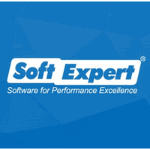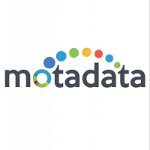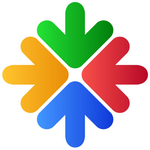List of Best Problem Management Software
Showing 10 of 21 productsZoho Desk, Zohos flagship cloud-based AI customer service software, helps businesses of all sizes and types deliver superior customer service without spending a fortune...Read Zoho Desk Reviews
Zendesk is a customer service software that helps businesses of all sizes deliver exceptional support to their customers. Its user-friendly platform streamlines communication through various channels and provides powerful tools for managing tickets,...Read Zendesk Reviews
SoftExpert Problem is a solution to your businesss operational challenges. This user-friendly software offers a complete suite of tools to efficiently manage and resolve all types of problems, ensuring smooth operations and maximum productivity. Say...Read SoftExpert Problem Reviews
Motadata is more than just a software - it is a IT analytics platform that enables organizations to make data-driven decisions. With a user-friendly interface functionalities, Motadata simplifies complex IT operations and helps improve performance, s...Read Motadata Reviews
TeamDynamix is a software designed for teams looking to streamline productivity and collaboration. With its user-friendly interface and innovative features, TeamDynamix is revolutionizing team management and project execution. Whether you’re a smal...Read TeamDynamix Reviews
BOSSDesk the all-in-one solution for streamlining your help desk and service management processes. Say goodbye to the headaches of managing customer requests and IT issues with this highly efficient and user-friendly software. Experience enhanced pro...Read BOSSDesk Reviews
Smartsheet, the ultimate tool for project management and team collaboration. This innovative platform helps businesses of all sizes streamline their workflows, increase productivity, and achieve their goals. With intuitive features and customizable t...Read Smartsheet Reviews
Onspring is a business process management software that streamlines and automates organizational workflows. With its user-friendly interface and customizable features, Onspring empowers businesses to achieve efficiency and transparency in their opera...Read Onspring Reviews
SMART SERVICE DESK ITSM is a solution for managing IT services seamlessly. This advanced software is designed to efficiently handle all IT-related tasks and processes with ease, ensuring smooth operations and enhanced productivity. With SMART SERVICE...Read SMART SERVICE DESK ITSM Reviews
SapphireIMS is a leading IT operations and service management software that offers a complete solution for managing and monitoring IT assets, applications, and infrastructure. With its user-friendly interface features, SapphireIMS helps organizations...Read SapphireIMS Reviews
- What Is Problem Management Software?
- Top Reasons Why Businesses Need Problem Management Software?
- What Are the Top Key Features of Problem Management Software?
- What Are the Top Benefits of Problem Management Software?
- What Are the Steps to Choose the Right Problem Management Software?
- What Are the Types of Problem Management Software for Different Industries?
- What Are the Technology Trends for Best Problem Management Software?
- What Are the Deployment Options for Problem Management Software?
What Is Problem Management Software?
An organization may use problem management software to identify, diagnose, classify, document, and resolve technical difficulties. It consists of numerous tools and processes that are used to promptly detect problems, collect appropriate data and evidence, and track progress via efficient resolution steps.
It is possible to reduce resolution time, prevent the recurrence of errors and issues, improve service delivery, and save operational expenses by using an organized and methodical approach to problem management.
In a word, the best problem management software assists businesses in identifying potential and existing difficulties, being proactive in preventing future problems, and ensuring that the root cause of any detected issue is addressed for a successful resolution.
Problem management tools enable teams to collect data, recognize patterns and trends, and view current and impending problems in a single centralized location, allowing for efficient and manageable problem solutions. It also contributes to the improvement of an organization's service quality.
Top Reasons Why Businesses Need Problem Management Software?
1. Automates the incident resolution process, making incident resolution easier and faster.
2. Improves problem trend analysis and root cause identification.
3. Assist in the application of best practices for problem management in ITIL (Information Technology Infrastructure Library).
4. Reduces the negative impact on the business by swiftly discovering, analyzing, and resolving problems.
5. streamlining operations, reduces the cost and time associated with problem management.
6. Improves customer service by resolving incidents more quickly.
7. Improves system performance visibility, enabling for proactive problem solutions.
8. Improves communication among various organizational units involved in problem resolution.
9. Enhances disaster recovery efforts by reducing downtime.
10. Improves system utilization by lowering problem resolution time and optimizing system resources.
11. Allows for easy access to problem history, which aids in the understanding of reoccurring issues.
12. Promotes collaboration among employees from various departments within the organization.
13. Improves service desk performance by ensuring that tickets are assigned to the appropriate staff.
14. Aids in the containment of serious incidents by providing a better knowledge of the scope of a problem.
15. It may be used to generate reports and distribute them to important stakeholders, ensuring that everyone is up to date on the status of any concerns.
What Are the Top Key Features of Problem Management Software?
The top key features of problem management software include:
1. Automated ticket assignment: Automated ticket assignment aids in the assignment of problem tickets to the appropriate individual based on their skill set or location, ensuring that the problem is resolved swiftly and efficiently.
2. End-to-end incident tracking: Incident tracking tracks the resolution of incidents from beginning to end, enabling for speedy and organized resolution.
3. Real-time insights: The best problem management software gives real-time insights into incident management, allowing for root cause analysis and assisting teams in identifying and resolving issues before they become big difficulties.
4. Network performance monitoring: Network performance monitoring can detect anomalous network or system behavior before it causes widespread problems, hence reducing the effect of prospective disruptions.
5. Automated alerts: When events occur, automated alerts help to notify users or teams, allowing for quick resolution and lowering the possibility of downtime or other negative consequences.
6. Cross-functional problem solving: The top problem management software enables teams to interact quickly and efficiently to identify and resolve problems, allowing them to achieve solutions rapidly regardless of their location.
7. Root cause analysis: Root cause analysis assists in determining the source of incidents, whether it is a human, a system, or an external event, allowing teams to take preventive steps and lower the chance of recurrence.
8. IT analytics: IT analytics aid in the rapid identification of possible problems or trends, helping teams manage risks before they become serious problems.
What Are the Top Benefits of Problem Management Software?
1. Improved visibility and tracking of problems: The best problem management software assists organizations in detecting and tracking problems in real time, allowing them to obtain visibility into performance issues as soon as they occur.
This enables businesses to swiftly identify fundamental issues and implement corrective actions to avoid customer discontent and financial losses.
2. Increased process efficiency and effectiveness: Teams can use top problem management software to automate operations, minimize redundancies, and save manual effort. Business teams can use this to streamline their processes and become more efficient and productive.
3. Reduce the number of incidents: Problem management tools assist organizations in reducing the number of events by identifying and resolving problems as soon as they arise.
4. Reduce downtime: Organisations can use top problem management software to detect and handle problems more rapidly, resulting in less downtime.
5. Enhanced communication and collaboration: Problem management software allows teams to securely interact and collaborate with one another, allowing them to work better together and accomplish better results.
6. Improved customer satisfaction: Problem management tools enable organizations to tackle problems promptly and reduce customer unhappiness by improving visibility and reducing downtime.
What Are the Steps to Choose the Right Problem Management Software?
1. Identify the Problem: The first step in selecting the best problem management software is to identify the problem you're attempting to solve. This will assist you in determining the type of software you require and how it should be customized to fit your requirements.
2. Consider Your Business Needs: Different organizations have distinct requirements. Before selecting the appropriate software, you must first identify what type of problem management you require.
If your company is dealing with complicated difficulties, you may need a more comprehensive software solution. It is critical to evaluate all conceivable software requirements, such as input modification, reporting, collaborations, and notifications.
3. Define the Features: After determining your requirements, you must outline the features your software should have and how you will utilize them. These elements should be developed to improve the effectiveness of problem management. Consider workflow automation, collaboration tools, reporting capabilities, notifications, and application connectors.
4. Research Software Options: After you've determined your requirements, you should look into the various software solutions accessible. Contrast features, pricing, consumer ratings, and reviews. It's also a good idea to find out whether the company offers a trial period so you can try out the program before buying it.
5. Get Feedback from Users: It is critical to obtain feedback from current software users in order to have an idea of their experience with the product. Inquire about how simple it was to set up, usability, customer support, and any problems they encountered. This will assist you in making an informed selection regarding the software you select.
6. Choose a System that Fits Your Budget: When it comes to software, pricing is always a significant consideration, and the price of problem management software can vary greatly. Consider all of the features you require and weigh them against the cost. Make sure you're getting the most bang for your buck with each purchase.
What Are the Types of Problem Management Software for Different Industries?
Many diverse sectors utilize problem management software to optimize operations, automate jobs, and increase overall productivity. Different forms of top problem management software may be employed depending on the complexity of the problem to be addressed and the special needs of a certain industry.
Problem management software that provides extensive incident recording, ticketing, and workflow management can assist IT organizations in prioritizing and resolving incidents promptly, reducing response times.
Furthermore, this type of software can assist the IT team in identifying mistake trends or reoccurring problems, resulting in a better knowledge of why various issues may occur. Problem management tools with features like automated scheduling, patient records, and electronic health records can assist offer detailed data that support patient care and assure proper billing in the healthcare industry.
This type of software can also assist medical professionals in identifying any problems with patient care or other processes to improve care delivery. To streamline operations and decrease human errors, manufacturing and logistics organizations can employ the best problem management software that provides automation and tracking of the production process.
This program can also assist in identifying mistakes and problems to promptly remedy them and save resources. Finally, an issue management solution that enables customer tickets, customer interaction tracking, and service level agreement (SLA) management is critical for customer service-oriented enterprises.
Problem management tools can assist the customer support team in better understanding client wants, swiftly resolving difficulties, and maintaining customer happiness.
What Are the Technology Trends for Best Problem Management Software?
Cloud computing, artificial intelligence, and mobile technology are the three major technological advancements influencing the finest problem management software. Cloud computing has transformed the delivery of the best problem-management software, enabling larger, more complicated problem-management solutions to be used by multiple users.
It enables users to remotely access data and resources, allowing problem management software to be deployed and accessible from any place. AI has also had a significant impact on the problem management software business, allowing software to analyze enormous volumes of data and uncover patterns, correlations, and anomalies within those data sets.
This helps to swiftly identify problems and allows firms to respond more quickly and effectively. Finally, mobile technology allows businesses to remotely access and update problem management software, allowing them to manage their problem-management procedures from anywhere.
This has considerably boosted organizations' flexibility and agility, allowing them to quickly install problem management processes and handle difficulties.
What Are the Deployment Options for Problem Management Software?
Problem management software deployment choices differ depending on the product. In general, software can be offered as an on-premise solution that requires installation and configuration on in-house servers, or as a cloud-based solution that can be delivered on a subscription basis.
On-premise systems typically provide more control and customization choices, whereas cloud-based solutions typically have shorter setup lead times and perks such as scalability and pay-as-you-go pricing. Depending on the vendor, you may also be able to access the software using an application programming interface (API).










